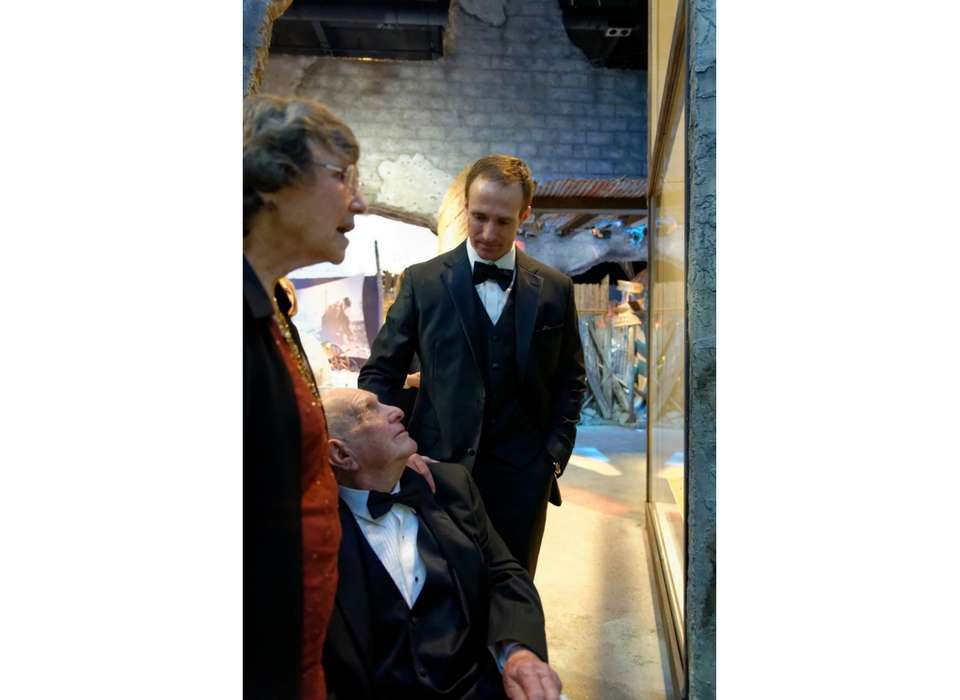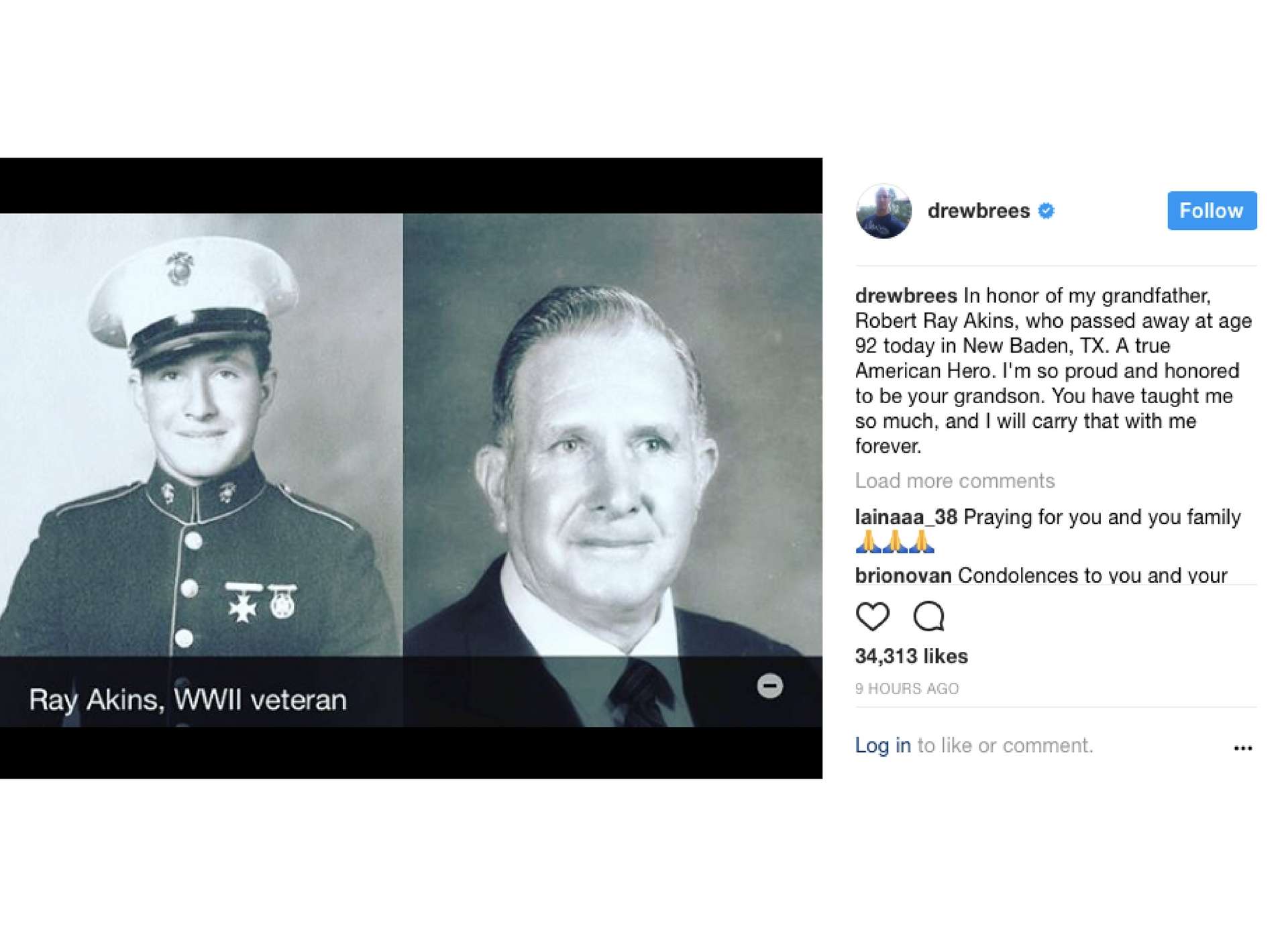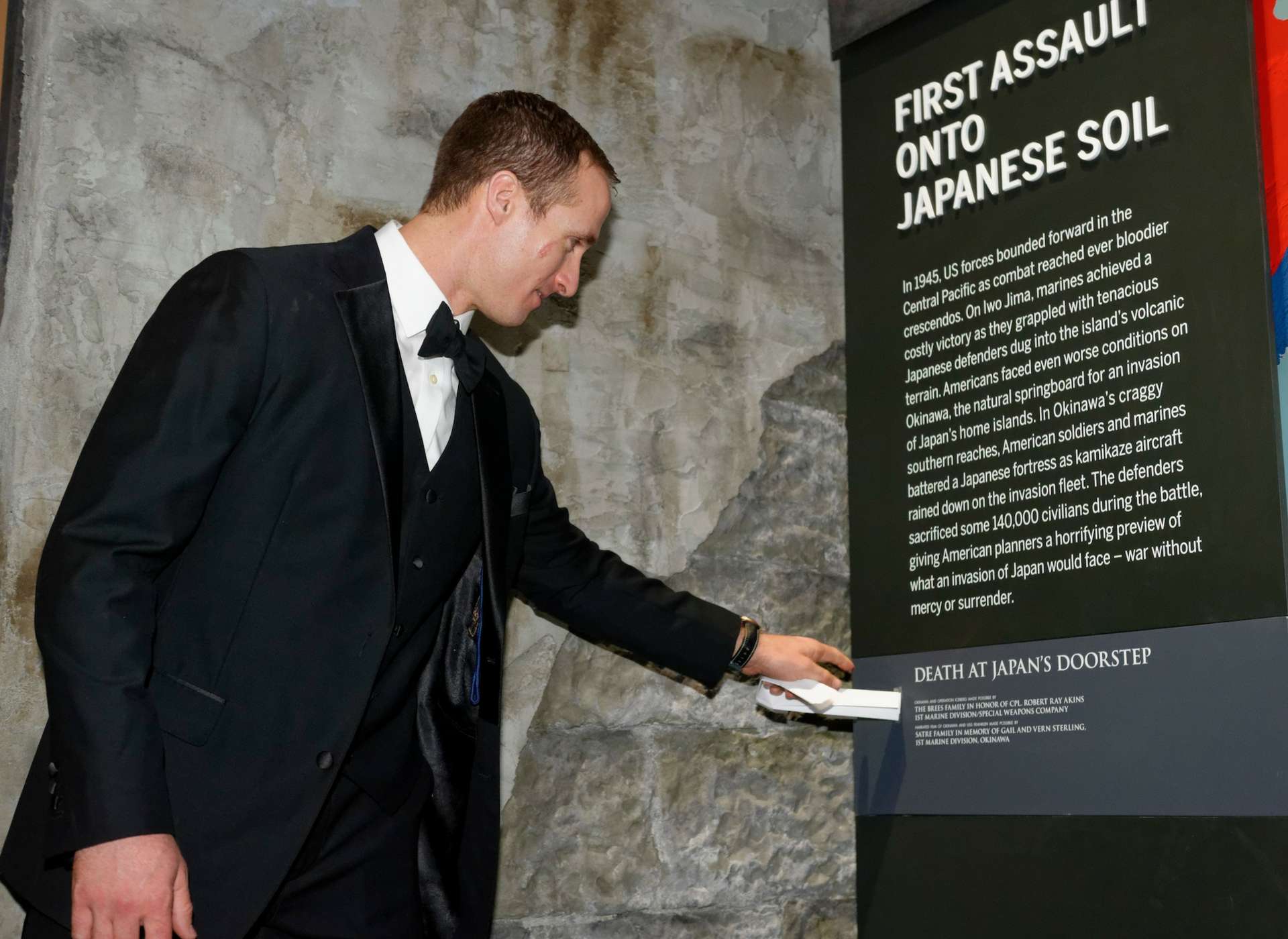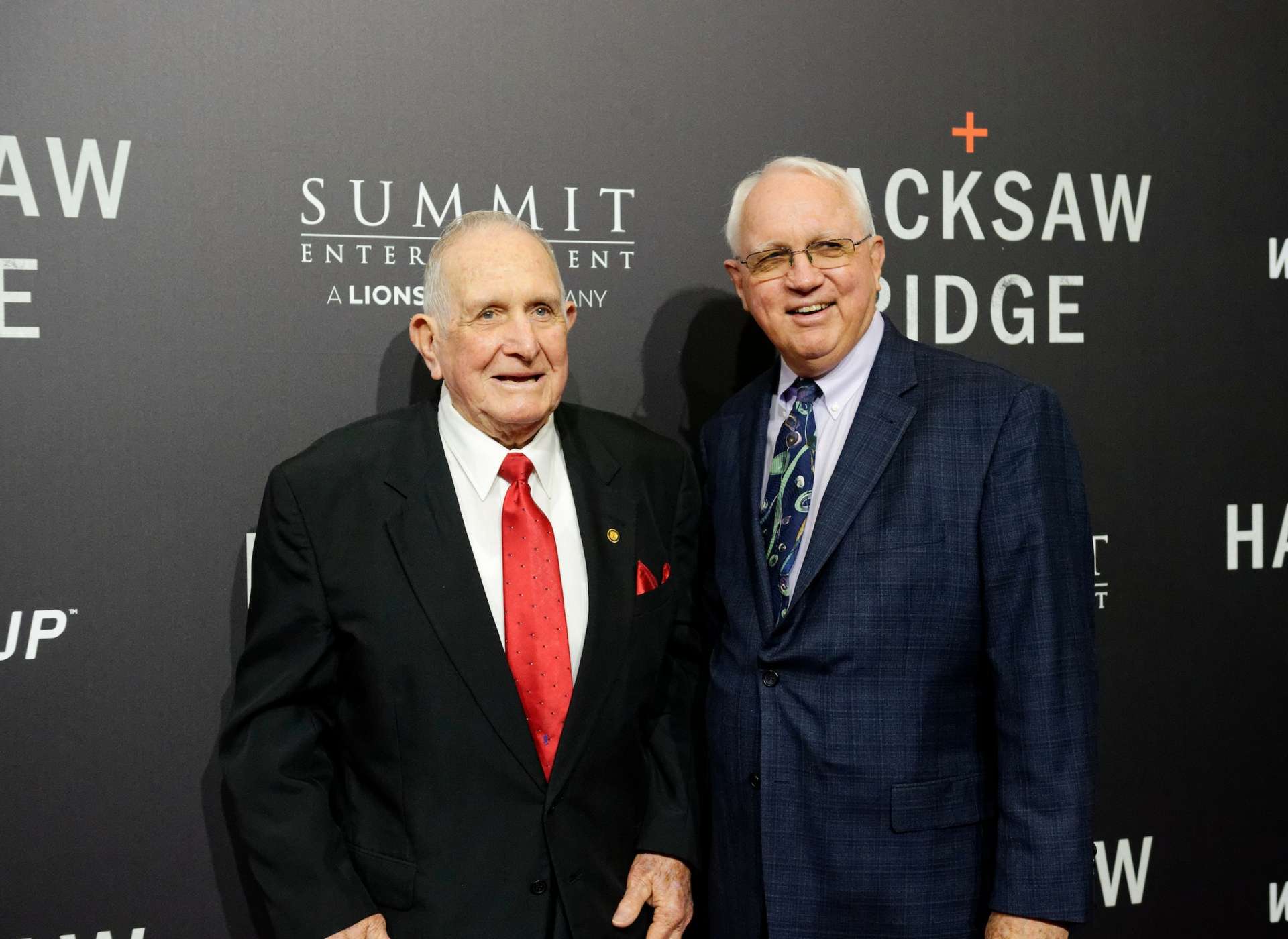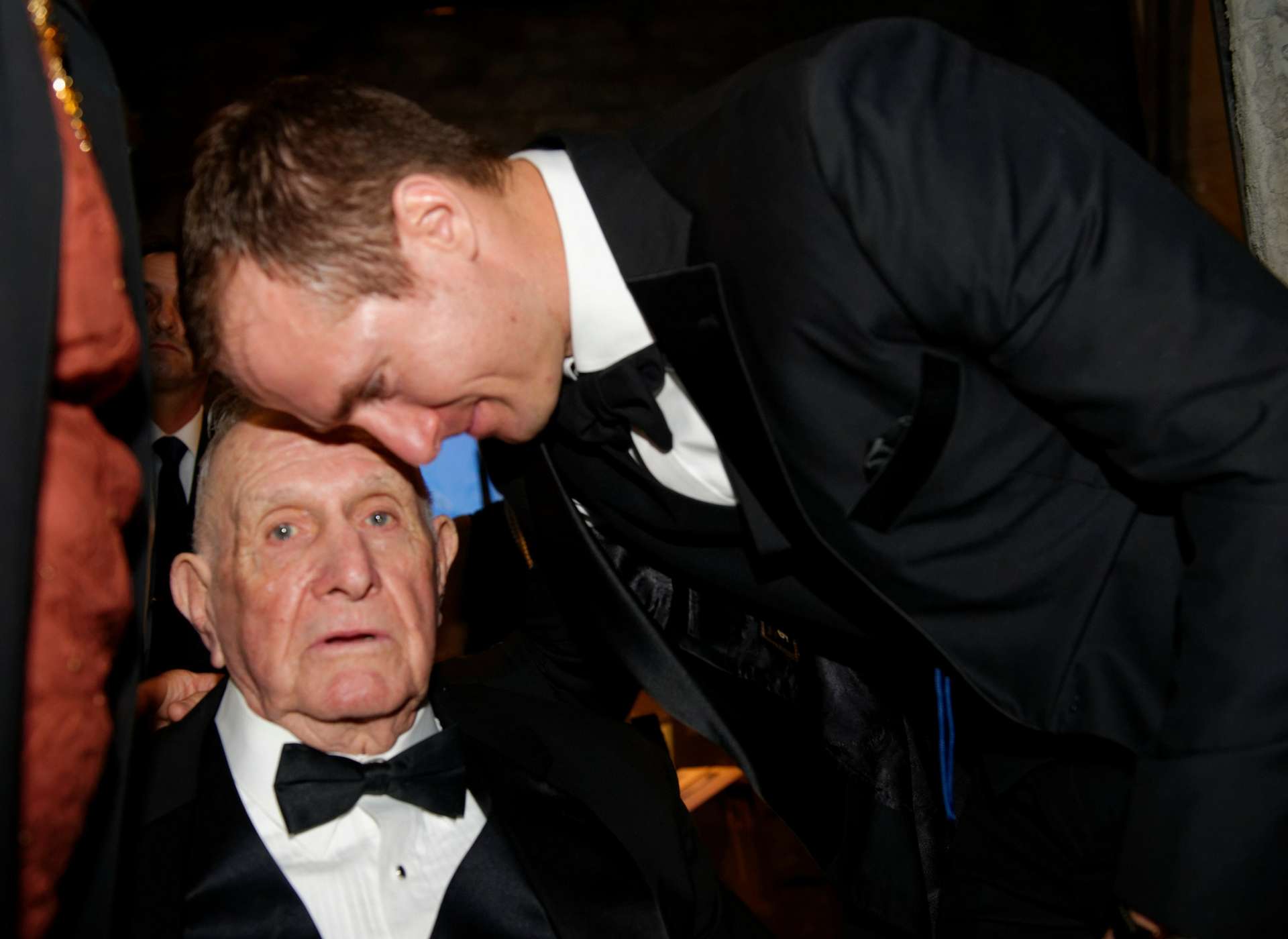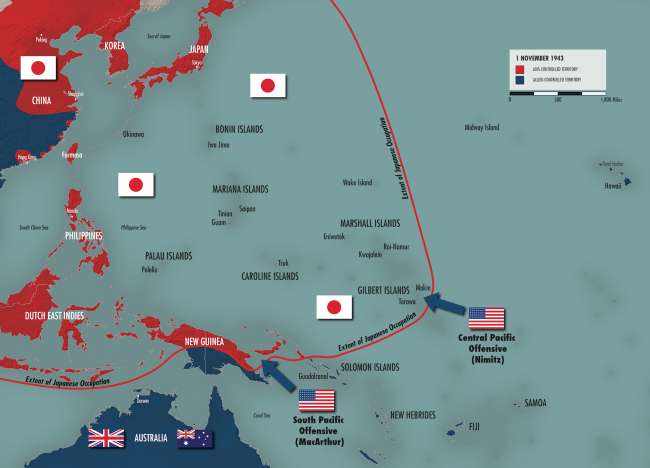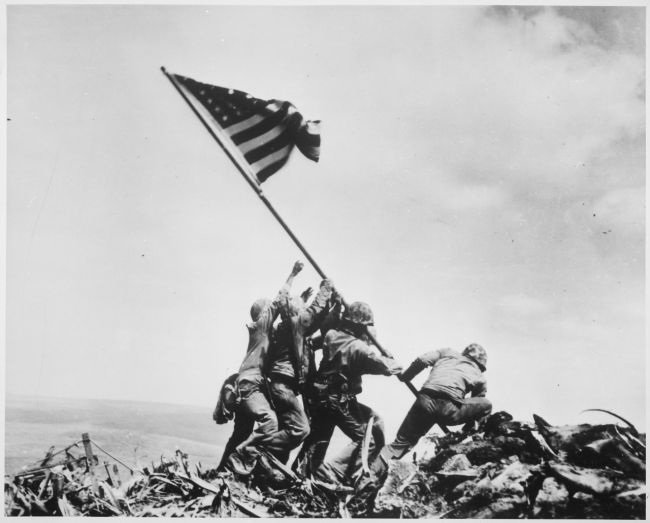Robert Ray Akins was 19 years old and weighed 202 pounds when he landed on Okinawa in April 1945 with the 1st Marine Regiment, 1st Marine Division. “I was hoping I would live to be 20,” Akins said in his Museum oral history. “My birthday was coming up in May.” After 81 days of fighting, Akins weighed 146 pounds.
In his oral history, taken by Seth Paridon in October 2007, Akins credited his survival on Okinawa to his training—which paradoxically instilled in him and his fellow Marines that they likely wouldn’t survive.
“They drilled into us from the word go, ‘Kill or be killed. One-way ticket,’” Akins said. “I never thought much about it at first, but ‘one-way ticket’ (means) you’re not coming back. . . . To make a good soldier, a good fighter, a good Marine—you can’t worry about dying.”
Akins, the grandfather of New Orleans Saints quarterback Drew Brees, died December 26 at age 92. The Brees Family dedicated the Okinawa gallery in the Museum’s Road to Tokyo exhibit to Akins, a legendary Texas high school football coach in his postwar life. Brees’s other grandfather, Eugene Wilson Brees, is similarly honored in the nearby China-Burma-India gallery.
Brees saluted the WWII service of both men as his contribution to the NFL's “My Cause, My Cleats” initiative, for which players wore customized game footwear to draw attention to charities of their choice during week 13 of the 2017 season. Supporting the USO, Brees wore his cleats during the December 3 New Orleans Saints home win against the Carolina Panthers.
For the initiative, Brees discussed both of his grandfathers in a video interview with Museum Senior Historian Rob Citino. Watch the video (and see the final tribute footwear) here.
"Drew's connection with his grandfathers and their generation is real," Citino said. "His love and respect for the men of his family who served is palpable, and he really knows his history: Drew Brees can throw down on World War II. He’s honored them at The National WWII Museum with a lasting tribute, and walking him through the galleries that bear their names was a moment I’ll never forget."
With his wife Virginia, Akins attended the December 2015 grand opening ceremonies for Road to Tokyo, where Brees surprised him with the gallery dedication (see photo at top).
The text above Akins’s name in the Death at Japan’s Doorstep: First Assault onto Japanese Soil gallery of the Museum’s Richard C. Adkerson & Freeport-McMoRan Foundation Road to Tokyo: Pacific Theater Galleries details the “ever bloodier” crescendo of combat as US forces advanced in the central Pacific. Following a costly victory on Iwo Jima’s volcanic terrain, “Americans faced even worse conditions on Okinawa, the natural springboard for an invasion of Japan’s home islands,” the panel says. “In Okinawa’s craggy southern reaches, American soldiers and marines battered a Japanese fortress as kamikaze aircraft rained down on the invasion fleet. The defenders sacrificed some 140,000 civilians during the battle, giving American planners a horrifying preview of what an invasion of Japan would face—war without mercy or surrender.”
On December 27, in his weekly meeting with media members, Brees said his grandfather’s wartime experiences in that hellish setting “were hard to talk about, I think . . . for a long time, (but) he reached a point where he felt like there were so many lessons on it, and it was a way to honor the guys he served with, too."
Our sympathies surround Akins’s family and friends. For sharing his war with the Museum and for the bravery he displayed so far from his Texas home during World War II, our gratitude to Corporal Robert Ray Akins, 1st Marine Division/Special Weapons Company, is undying. Rest in peace, sir.
“A true American Hero,” said Brees of Akins in a December 26 Instagram post. “I'm so proud and honored to be your grandson. You have taught me so much, and I will carry that with me forever.”
-

The December 26 Instagram post by Drew Brees.
-

Drew Brees unveils his grandfather's dedication panel at Road to Tokyo grand opening.
-

Pictured with Founding CEO & President Gordon H. "Nick" Mueller, Akins attended the October 2016 Museum screening of the film "Hacksaw Ridge."
-

Brees with his "My Cause, My Cleats" tribute to his WWII veteran grandfathers.
-

Akins and Brees at the December 2015 grand opening ceremony for Road to Tokyo.
